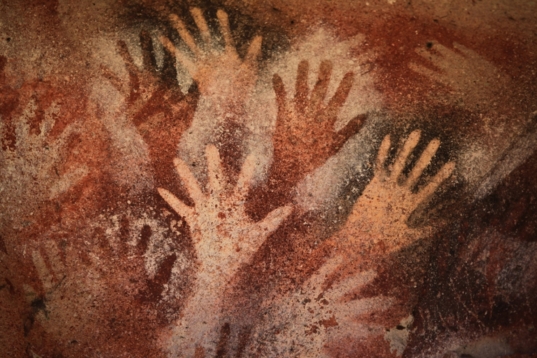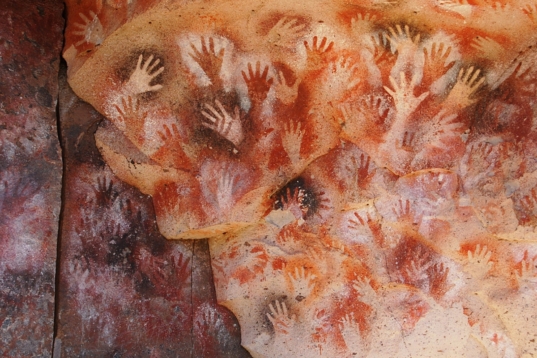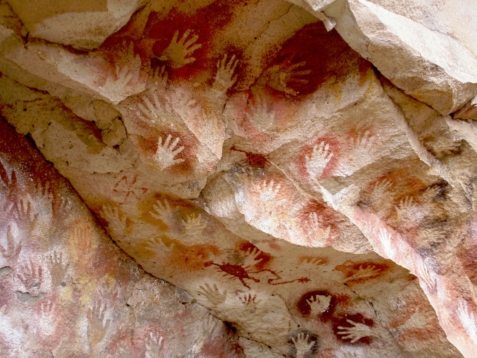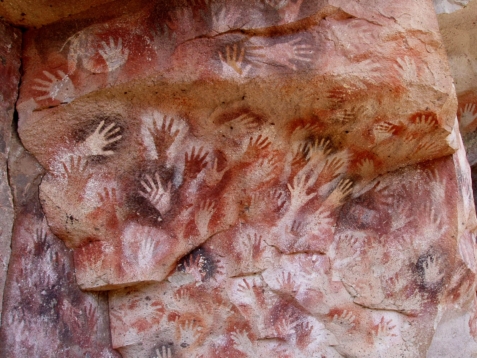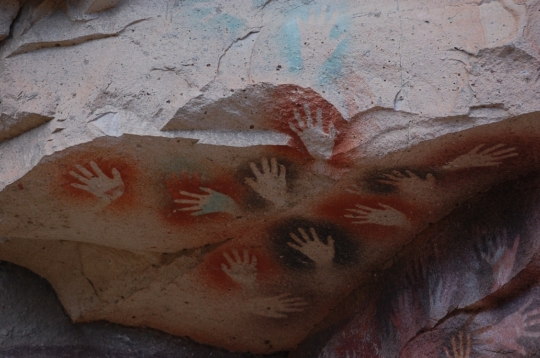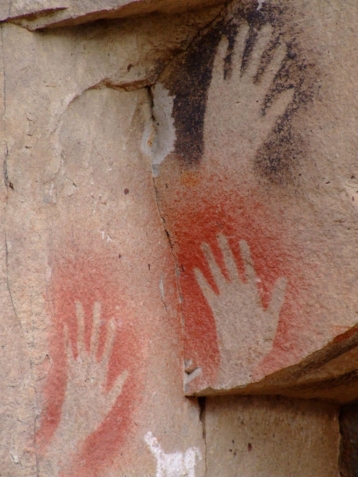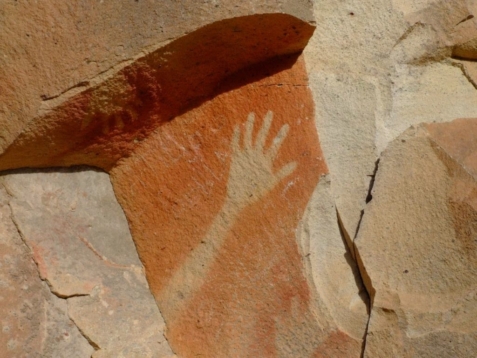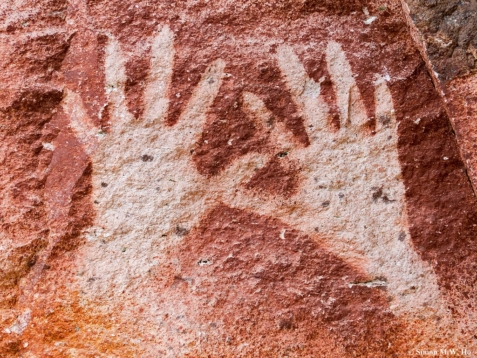Куэва-де-лас-Манос
Пещера, или группа пещер, Куэва-де-лас-Манос в Патагонии (Аргентина) известна главным образом своим наскальными рисунками, выполненными, по одной из версий, между 11 000 и 7 500 годами до н.э. Другие варианты предполагают периоды времени от VI-II в.в. до н.э до XI-X тыс. до н.э. В принципе, материальные обстоятельства таковы, что делать предположения на этот счет трудно. Имеющиеся оценки базируются на датировке сопутствующих находок в пещере.
Название «Cueva de las Manos» означает на испанском «Пещера рук». Названа в честь своих самых известных рисунков - многочисленных изображений рук, главным образом левых. Имеются так же рисунки животных, таких, как гуанако (Lama guanicoe) или нанду, все еще распространенных в регионе, геометрические фигуры, зигзаги, изображения солнца и охотничье сцены, например, весьма натуралистичное воспроизведение разнообразных охотничьих техник, включая использование болас.
Источники и ссылки
- Flickr.com/photos/andresbruzzone/
- Flickr.com/photos/marlisk/
- Linksumdiewelt.de/2015/01/
- N69s54a.com/2012/the-end-of-the-world
- Opp-joeck.de/ruta-cuarenta-und-carretera-austral/
- Podrozniccy.com/en/travels/argentina/17669/gallery-cueva-de-los-manos.htm
- Ru.wikipedia.org: Куэва-де-лас-Манос
- Rumbomondo.blogspot.ru/2014/06/cueva-de-las-manos-reg-santa-cruz.html
- Tierraspatagonicas.com/la-cueva-de-las-manos
- Timetravelturtle.com/2012/03/cave-hands-patagonia-argentina/
- Whc.unesco.org/en/list/936/
- Whenonearth.net/cueva-de-las-manos-cave-hands-patagonia-argentina/
